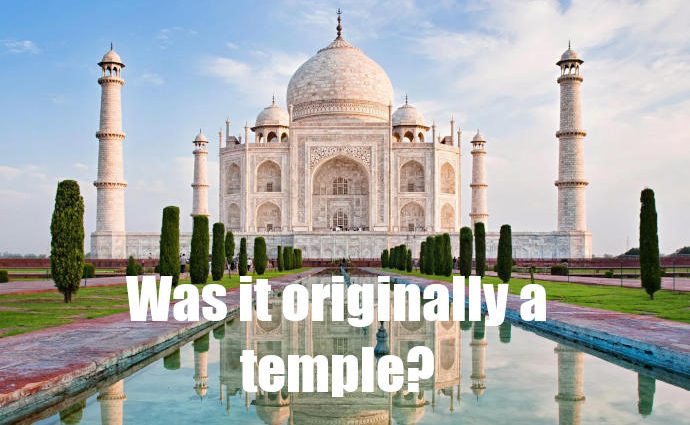Allahabad High Court dismisses the PIL, admonishes the petitioner
After the landmark judgement of the Supreme Court of India settling the Ayodhya Ram Temple issue, Hindu groups are pursuing the iconic temples at Kashi Vishwanath (at Varanasi) and Krishna Janambhoomi at Mathura their claims of Islamic encroachments through legal avenues and the processes are already underway. While there were tensions simmering in Varanasi due to a survey ordered by a court there to do videography of the complex around the iconic temple, the news of a PIL filed in the Lucknow bench of the Uttar Pradesh High came through where the petitioner Dr Rajneesh Singh, sought the High Court’s indulgence seeking various orders to have the facts relating to the Taj Mahal ascertained.
Among other things, the PIL sought an order to have the sealed rooms (all 22 of them) in the building opened to settle whether they are in fact small temples of various Hindu Gods and Goddesses.
Many historians and scholars believe the structure is a Hindu temple – Tejo Mahalaya – a temple to worship Hindu God – Lord Shiva. The authority on the research is P. N Oak. His book Taj Mahal, the true story : the tale of a temple vandalized is widely available all over the world including Australia.
Various documents have been produced by historians challenging the version of history taught to the world about the building being a mausoleum built by Shah Jahan in the memory of his deceased wife Mumtaz.
An American historian scholar has claimed that the carbon dating done on a sample he collected while visiting the building, settles the fact the building is much older than the reign of Shah Jahan 1628 -1658.
The PIL also sought an order for the constitution of a fact finding committee to examine various claims being made by various scholars to conclusively settle if the building was in fact a temple.
But the Lucknow Bench of the Allahabad High Court has dismissed the plea, albeit on technical grounds.
A bench of Justices DK Upadhyay and Subhash Vidyarthi opined that such debates were welcome in informal settings, but not in a court of law.
The judges also expressed their displeasure at the Taj Mahal PIL, saying,
“Are these issues debatable in a court of law? Are we judges trained and equipped with such things?“
The judges stressed that the PIL to stand in the form it had been pleaded, there had to be an infringement of a right.
Responding to the petitioner’s argument regarding “right to information”, the Court asked if the study sought was in any way connected to the right to information.
The Bench further said,
“Go and research. Do M.A. Do PhD. Then choose such a topic and if any institute disallows you to research on such a topic. Then come to us. Please enrol yourself in MA, then go for NET, JRF and if any university denies you to research on such topic then come to us.”
Clarifying the flawed technicalities, the bench said:
“What are you seeking is exploration of facts by way of a committee. That’s none of your rights and it’s not under the ambit of RTI Act.”
The judges further said:
“We are of the opinion that the petitioner has called upon us to give a verdict on completely a non-justiciable issue.”
The plea was drafted and filed by Advocate Rudra Vikram Singh.
For the uninitiated, the PIL to seek truth on Taj Mahal has not been dismissed on its merits but legal technicalities. It would not be surprising to see fresh PIL(s) on the same issue, taking a cue from the judgement delivered.
Similar Posts by The Author:
- Problems of Arvind Kejriwal lie in the Charge-sheet against Manish Sisodia
- ABC Ram Temple coverage: ABC Ombudsman’s “No Bias” report – a slap on the face of Australian Hindus
- Defamation dogfights are dogging the leader: Should John Pesutto step down to come back later?
- ASIO boss Mike Burgess MUST name the rogue politician, academics
- Who can stop John Pesutto from becoming Premier of Victoria?

